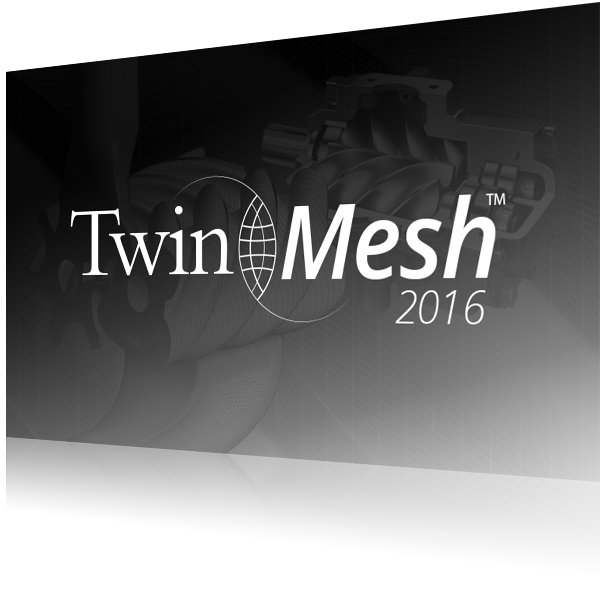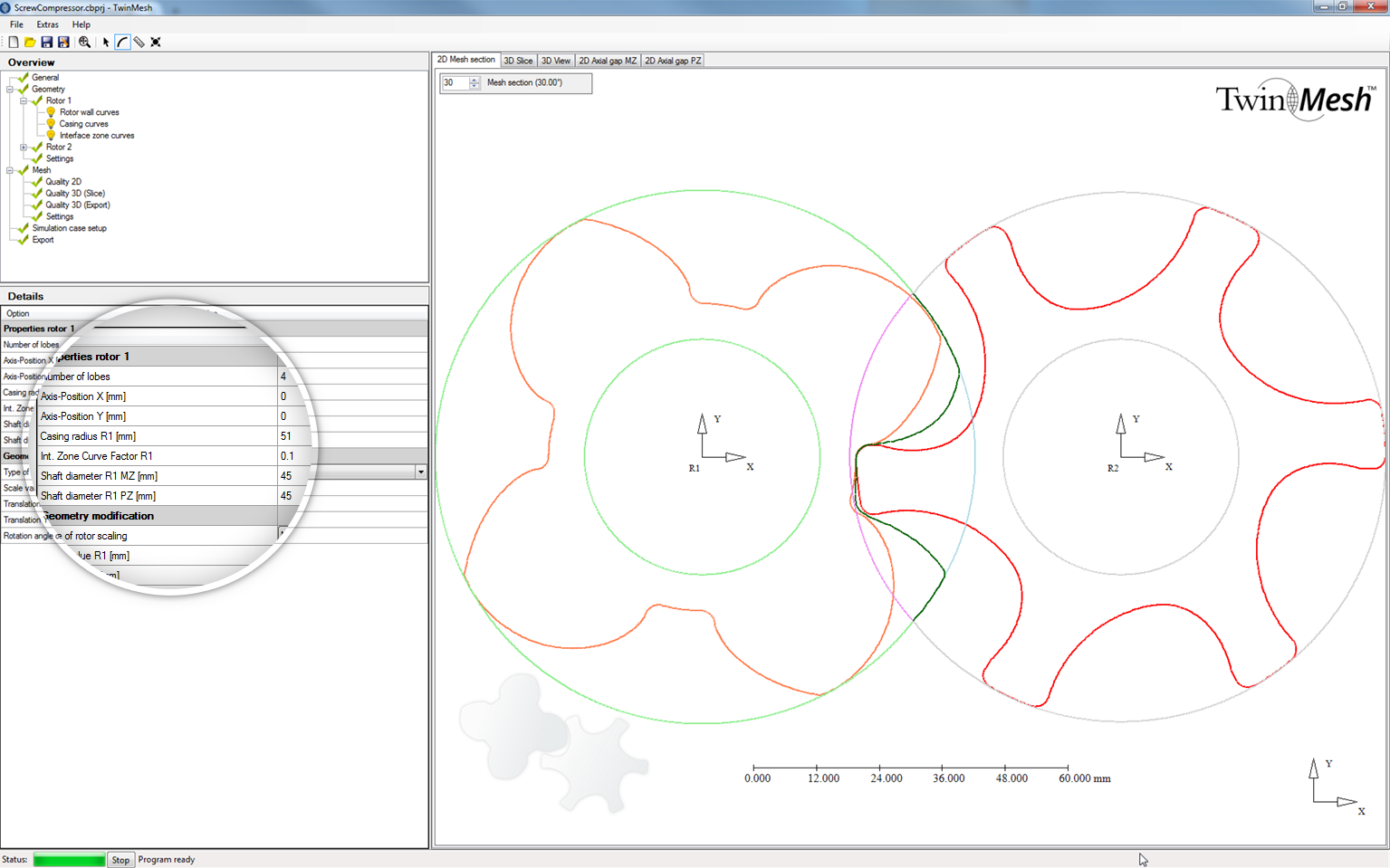We are happy to inform you that our new release TwinMesh 2016 is now available. Find out what is new in TwinMesh 2016 below:
TwinMesh 2016 offers many more useful features that allow the user to handle more types of machines within the GUI. Some features and options were shifted and renamed within the GUI for a more intuitive handling. Some new options are available that extend the users influence on the meshing process. Smoothing algorithms as well as the interface generation have been improved overall and extended so that TwinMesh 2016 is even faster now when generating its high quality meshes.

New Machine Types
The type of machine can be chosen at the beginning of a new project to handle different types of machines including machine specific templates for the meshing process and the simulation setup.
New machine types at TwinMesh 2016:
- Wankel engine,
- Eccentric screw pump (progressive cavity pump),
- Scroll machine, and
- Conical rotor pump.
Automatic ANSYS CFX-Pre Setup
The setup allows specifying the main settings for the CFD simulation to speed up the setup process. Depending on the type of machine a simulation template is provided, which includes standard settings for the CFD simulation within ANSYS CFX. The template settings can be changed in ANSYS CFX-Pre in more detail after exporting the project files including the meshes if necessary.
Axial Gaps Mesh Generation
Axial gaps can be generated for almost every machine type. The meshing process is similar to the general meshing process. The setup templates consider the necessary interface definitions and transformation rules.
Generation of Boundary Curves
Typically, the casing curves in the working chamber cross section consist of circles. These geometry curves can be generated in TwinMesh without additional CAD import. The interface zone curves are automatically generated. The boundary associations are being made automatically. This option allows setting the gap size specified for the operating point of the machine independent of the original CAD file.
Manual Node Modification
In some cases the automatic mesh generation process cannot reach the minimum element quality for some mesh section and some elements. With this option a manual modification of the nodes is possible without a complete re-mesh. A quality feedback is given while moving the nodes.
Merge Rotor Meshes
This option connects the volume meshes of “rotor 1” and “rotor 2” to one single volume mesh where no interface between these meshes is needed. It increases the numerical stability in some case (especially for multiphase simulations) and is available for the “OuterFix”-method.
Node Mapping at Interface
The “InnerFix”-method has no 1to1 interface between the meshes of “rotor 1” and “rotor 2” which leads to gaps or overlapping elements at the interface. This new function reduces these effects to increase the mesh quality at the interface.
Multiple tabs for each mesh view and new tool strip buttons to switch between different selection-modes are now available.
The license mechanism in TwinMesh 2016 was modified in order to support all new machine types. When exporting a project the license file will be copied now automatically into the “Grids”-Folder. Users of TwinMesh 2016 beta can use their existing license. However, users of TwinMesh 2015 will need a new license file.
The import of geometry files in IGES format is improved and faster.
The export files include an ANSYS CFX session file and an ANSYS CFX CCL file with the setup definition, respectively.
Enjoy working with this great new release of the leading software for structured grid generation for rotary positive displacement machines!







